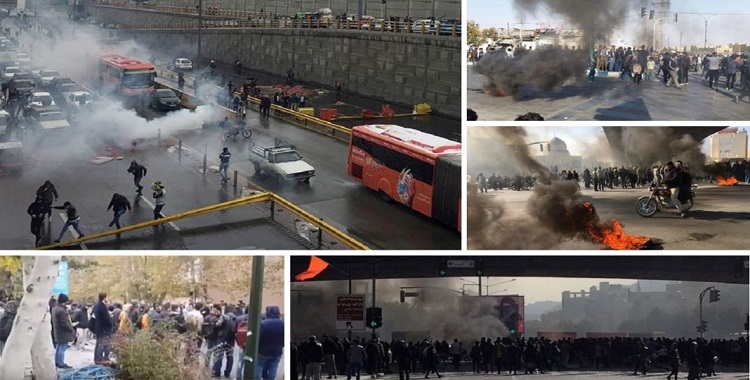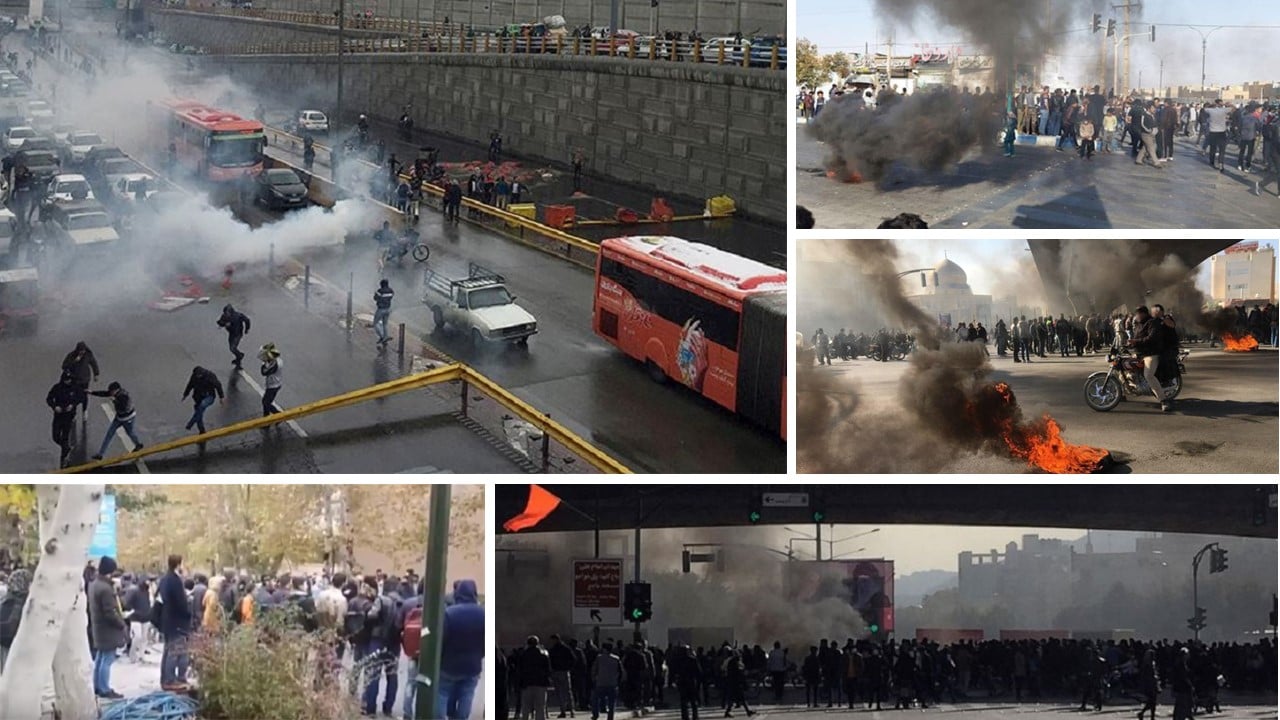Iran: Amidst Many Crises, Tehran Only Intends to Address One: Escalating Popular Dissent


Written by
Mansoureh Galestan
Live Report: Day 6 of Iran Protests – via the MEK’s NetworkIran’s theocratic regime is under threat from three simultaneous, overlapping crises. Since the end of 2017, the country has been the site of at least three protest movements that encompassed most or all of its 31 provinces. These uprisings were largely fueled by public frustration with an economy that has been steadily deteriorating in the face of rampant government mismanagement. And now, Iranian activists and government officials share the expectation for more of the same, because the economic crisis remains unresolved and has been made worse by an equally mismanaged public health crisis.
The coronavirus pandemic has hit Iran harder than any other country in the Middle East, and arguably harder than any other country in the world. While Tehran acknowledges that local outbreaks have gotten much worse in recent weeks, the official death toll stands at a little over 40,000. But the National Council of Resistance of Iran has gathered intelligence pointing to a figure nearly five times higher, which reflects drastic under-reporting by the Iranian Health Ministry.
That in turn reflects the regime’s desperate efforts to downplay its poor governance at a time when Iranian society appears to be constantly in an explosive state. On Tuesday, the NCRI hosted an online conference in which it affirmed the belief that another nationwide uprising is imminent and will push the regime to the brink of overthrow. Several speakers at that event, which marked the anniversary of the largest such uprising, noted that Iranian officials had spent the intervening year warning one another about persistent unrest and the growing social influence of the NCRI’s main constituent group, the People’s Mojahedin Organization of Iran (PMOI-MEK).
For most of its 41-year reign, the theocratic regime has denied that the MEK was sufficiently well-organized to pose a serious threat to its hold on power. But as the economic crisis and the pandemic have brought the MEK’s platform of regime change more fully into the mainstream, that narrative has come apart. Tehran’s default strategy for reestablishing it has been to increase repression of dissent both at home and abroad.
Dozens of casualties resulted from that strategy in the wake of the first recent uprising, in January 2018, when authorities opened fire on protesters and tortured many of the thousands of activists whom they took into custody. The death toll very nearly skyrocketed in June of that year, when operatives under the leadership of a high-ranking Iranian diplomat plotted to bomb a gathering of expatriates and Western lawmakers that had been organized near Paris by the NCRI. Then, the death toll actually did skyrocket in November 2019, when the regime, made more desperate by the failure of that plot, oversaw 1,500 killings during one week of domestic unrest.
The killings were carried out predominantly by the Islamic Revolutionary Guard Corps, which was deployed to confront protesters with orders directly from the regime’s Supreme Leader Ali Khamenei. In Tuesday’s conference, NCRI President-elect Maryam Rajavi characterized those orders as an explicit endorsement of a “ruthless massacre.” She then went on to say that the regime’s response to the November uprising was a “crime against humanity” and that the IRGC and related authorities “must face justice” for it.
These remarks constitute an open appeal to the international community. Rajavi has urged the United Nations and its leading member states to expand human rights-related sanctions and to open an investigation into the conditions of Iranian prisons, where participants in the November uprising are reportedly still experiencing systematic torture.
Far from demanding that sort of accountability from the IRGC in the wake of last year’s killings, the regime’s Supreme Leader Khamenei has reaffirmed commitment to repressive measures as the first and only means of dealing with the regime’s mounting crises. In some cases, he and his subordinates have done this in the guise of attempts to improve conditions that are driving ongoing public unrest. But the veneer of legitimate policy is never very difficult to penetrate. One need look no further than the simple fact that those efforts are largely vested in the same hardline paramilitary that murdered 1,500 peaceful activists last November.
It was Hossein Salami, the commander-in-chief of the IRGC, who announced the establishment, on November 4, of a new headquarters with the mission of controlling commodity prices and reducing corruption in the nation’s economy. It is difficult to see how this is supposed to go along with the IRGC’s usual mission of suppressing dissent and exporting the revolution. Then again, the establishment of this headquarters is by no means the first instance of the paramilitary being invited to exert influence over the economy.
The NCRI has provided detailed reports over the years which estimate that the Revolutionary Guards control well over half of Iran’s gross domestic product. Much of that control is explicit, as with the economic activities of the organization’s construction division, Khatam al-Anbia. But much of it is more clandestine, with the IRGC operating a series of front companies and reaping the majority of the benefits of Iran’s black-market economy.
The IRGC has clearly played a major role in creating those conditions, meaning that it already had the power to improve the management of the economy before establishing the new headquarters to address the worsening crisis. Presumably, the only thing that this development adds to the IRGC’s toolkit is greater power to harass and undermine the shrinking number of Iranian institutions whose economic activities are independent of its own.
This in turn underscores the fact that the regime has no strategy to bring to bear on such matters other than repression. In reacting to Salami’s announcement, the NCRI characterized the economic headquarters’ role as “oppressing ordinary sellers” and “turning different sectors of society into each other’s enemies.” In other words, the regime’s initiative is less concerned with actually improving the economy than it is with making sure that blame for harsh conditions falls upon someone other than the government.
Recalling Iran’s nationwide November 2019 protests after gas price hike
The same strategy can be seen in Iranian officials’ public statements on the coronavirus pandemic, which invariably ignore their own lack of intervention while blaming the civilian population for failing to follow the advice of health experts. This misallocation of the blame can only be expected to get worse as the IRGC exerts more and more influence over the public health situation, as well. The establishing of the IRGC economic headquarters was accompanied by that of a headquarters for addressing the coronavirus outbreak, and the latter announcement featured promises that the paramilitary would soon be going door-to-door under the pretense of attempting to identify and isolate positive cases.
In reality, such measures indicate that there is little difference between the headquarters for the economy and the coronavirus response, on one hand, and a third headquarters tasked with countering “thugs and hooligans,” on the other. Those epithets actually refer to the advocates for Iranian democracy who have been leading more-or-less continuous domestic unrest for the past three years. Crushing this movement is the only goal the regime really cares about, and the international community should understand that this will lead to worsening abuses until the regime is held accountable.

